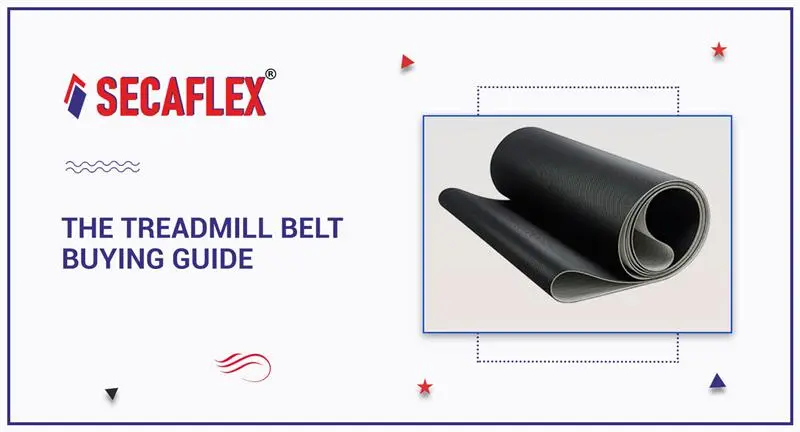- + 91-9167662789
- care@dktee.com

April 23, 2025
Brand Compatibility

Treadmills are the most basic fitness devices. If you manage a gym or a fitness studio, you must keep your treadmills working. Investing in a home treadmill is a terrific method to guarantee that you can work out at your comfort when you can’t go to the gym or outside. When selecting a treadmill belt for use, numerous factors should be considered. In this article, we’ll give you our best advice and the information you need to make sure the treadmill belt you buy is perfect for you.
Tips to Buy the Right Treadmill Belt
Belts exist in a variety of lengths, widths, and materials, and each factor is important in achieving the desired functionality.
1. Width
The usual treadmill belt width ranges from 18 to 22 inches and is critical in establishing your stability while working out. The appropriate belt size for you, however, is determined by your height and stride length.
Narrow Belts (18 inches): These belts are ideal for those who desire a more compact jogging area. They are usually seen on inexpensive treadmills and are typically used for walking.
Standard Belts (20 inches): This treadmill’s 20-inch-wide belt strikes a decent compromise between room and budget. It is ideal for dedicated runners.
Wide Belts (22 inches): These are particularly made for folks who need plenty of room to move around. Wide belts enable a more comfortable and expansive running experience. They are great for professional runners. However, larger belts wear the machine down the most.
2. Thickness
The thickness of a treadmill belt is another important thing to consider. It has a direct influence on the longevity, cushioning, and overall performance of the belt.
3. Length
The length of a treadmill belt is an important consideration when selecting a treadmill, especially if you’re a runner. Here’s why.
1. Stride Length: Taller people or those who take longer steps require a longer belt to fit their natural running style. A shorter belt may feel restrictive and limit your movement.
2. Running Intensity: If you want to run at faster speeds or inclines, a longer belt gives you more room to prolong your stride without fear of stepping off the back.
3. Comfort and Safety: A correctly fitting belt provides a comfortable and safe jogging experience, lowering the chance of injury.
4. Material Selection
Treadmill belts may be built of a number of materials, each with its own set of advantages and disadvantages.
Polyester woven fabric: This is the foundation layer, giving structural stability and longevity.
Polyvinyl chloride (PVC)
This layer is put over the polyester fabric to provide stiffness and strength to the belt. It helps prevent stretching and sagging, resulting in a smooth and stable running surface.
Resilient foam
This substance, which is often constructed of polyurethane or EVA foam, provides cushioning and shock absorption, decreasing impact on the user’s joints. However, the belts fashioned from this had poor wear and were pricey, so they are no longer utilized.
Polyurethane
The top layer, which the user immediately interacts with, is often constructed of a long-lasting and pleasant substance such as polyurethane. However, because of its high cost, it is only used in 10% of all belts made. Nowadays, practically all belts are PVC-coated.
Brand Compatibility
As stated at the beginning of this treadmill belt selection guide, the most important aspect is ensuring the appropriate fit; thus, the replacement component should be compatible with the brand and model of your exercise equipment.
You may acquire Original Equipment Manufacturer (OEM) components directly from the treadmill belt manufacturer or aftermarket universal choices from numerous internet sellers.
Conclusion
You now understand what to look for in a treadmill belt. We hope you found our Buyer’s Guide useful in your search for the ideal running belt. This information will help you create your conclusions on which treadmills best suit your needs. If you are looking for treadmill belts, look no further than DKTEE.

DKT Engineering Enterprises
DKT Engineering Enterprises has vast experience in manufacturing conveyor belts in India. We are providing high quality products to our clients Since 2010.
